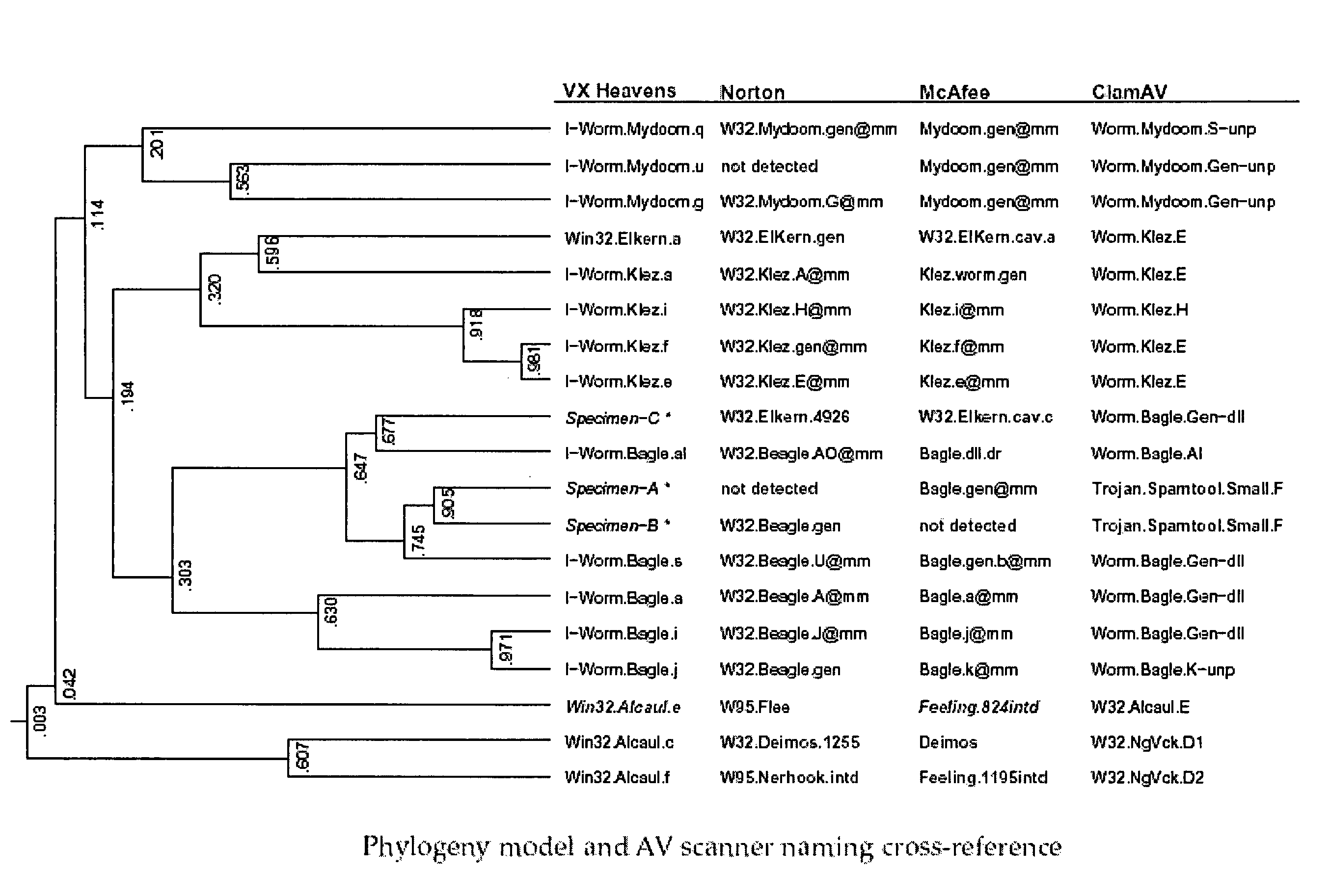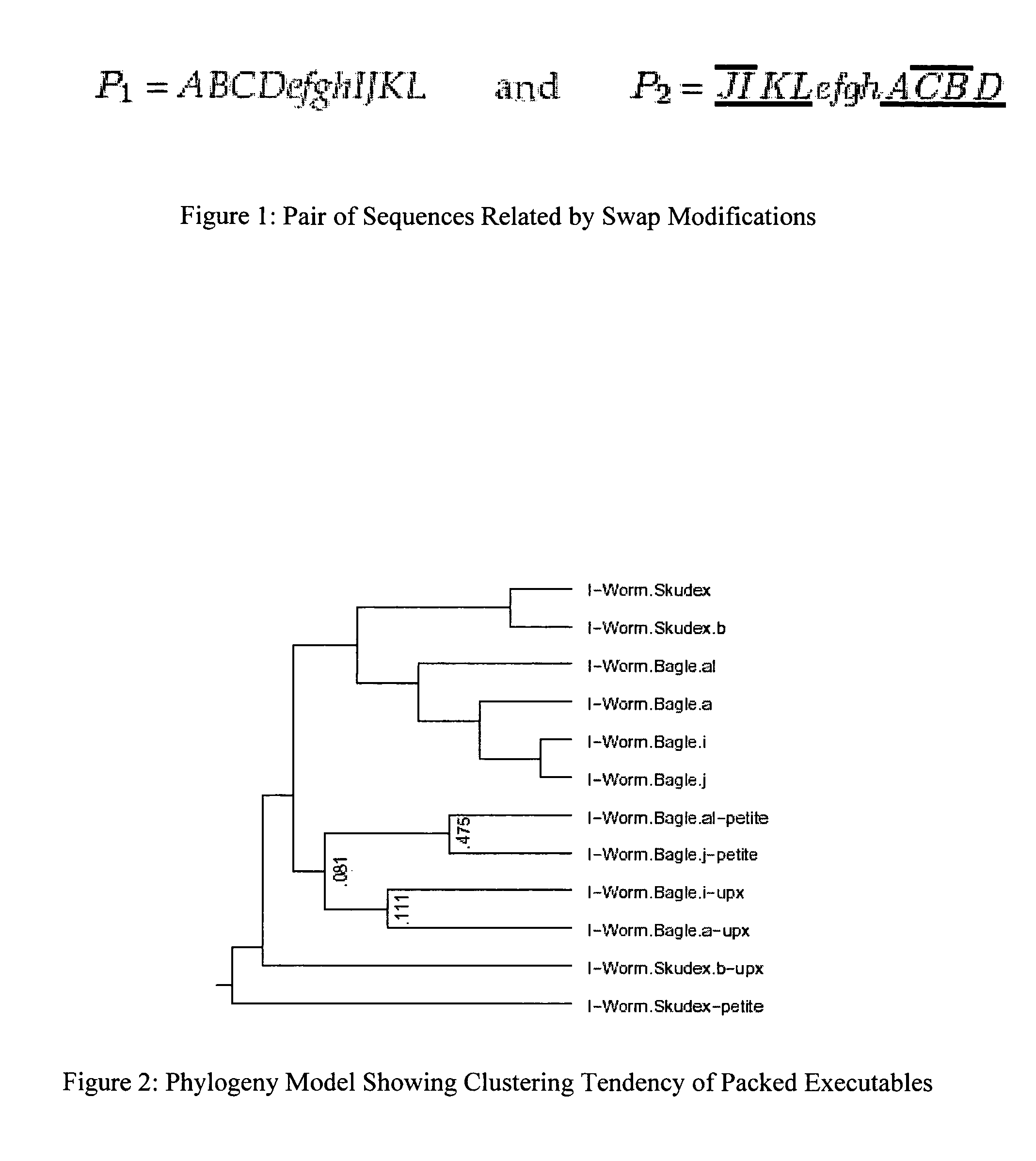Phylogeny generation
a technology of phylogeny and generation, applied in the field of comparison, classification and search of executable versions of computer programs, can solve the problems of obfuscation of calls, inability to research the ancestry and origin of individual portions, and simple n-gram analysis
- Summary
- Abstract
- Description
- Claims
- Application Information
AI Technical Summary
Problems solved by technology
Method used
Image
Examples
Embodiment Construction
Reorderings of code might be a result of malware author changing the behavior and organization of the code, or they might be a result of metamorphic programs modifying their own code. One aim of the invention is provide methods that can reconstruct derivation relationships in the presence of such perturbations. Specifically, two feature extraction techniques are examined: n-grams and a newly introduced variation of n-grams which may appear in any permutation—we call these “n-perms.” These techniques are useful because they can find matches of similar segments in programs, and with such matches it is possible to generate models of likely derivation relationships through the analysis of similarity scores.
Phylogenetic systematics is the study of how organisms relate and can be ordered; a phylogeny is the evolutionary history or relationships between organisms. Molecular phylogenetics takes the approach of studying organism relationships by inferring derivation relationships from the in...
PUM
 Login to View More
Login to View More Abstract
Description
Claims
Application Information
 Login to View More
Login to View More - R&D
- Intellectual Property
- Life Sciences
- Materials
- Tech Scout
- Unparalleled Data Quality
- Higher Quality Content
- 60% Fewer Hallucinations
Browse by: Latest US Patents, China's latest patents, Technical Efficacy Thesaurus, Application Domain, Technology Topic, Popular Technical Reports.
© 2025 PatSnap. All rights reserved.Legal|Privacy policy|Modern Slavery Act Transparency Statement|Sitemap|About US| Contact US: help@patsnap.com



